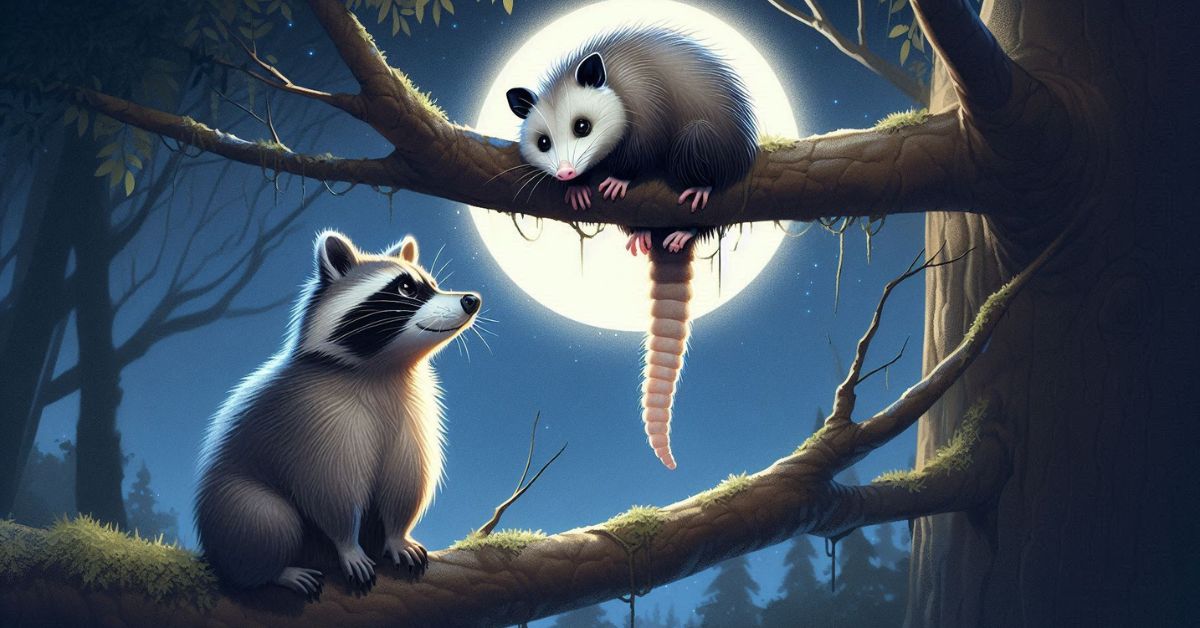The tñacuache, commonly known as the opossum, is a fascinating creature that captures the interest of ecologists, wildlife enthusiasts, and even folklore aficionados. Native to the Americas, the tñacuache is a marsupial that embodies unique biological traits, intriguing behaviors, and a significant role in its ecosystem. This article will delve into the biology, behavior, ecological importance, and cultural significance of the tñacuache, offering a comprehensive understanding of this remarkable animal.
Taxonomy and Classification
The scientific name of the common opossum is Didelphis virginiana, which is part of the order Didelphimorphia and the family Didelphidae. As the only marsupial found in North America, the tñacuache is a unique representative of its kind, distinguishing itself from the vast array of mammals that inhabit the continent. This classification underscores the evolutionary history of marsupials, which are primarily found in Australia and nearby islands. The tñacuache’s presence in North America provides valuable insight into the adaptations and survival strategies of marsupials outside their typical range.
Physical Characteristics
Opossums exhibit a variety of physical characteristics that make them easily recognizable. They are medium-sized marsupials, with an average length ranging from 24 to 40 inches, including their tails. The tail itself can be as long as their body, adding to their unique silhouette. Their fur typically appears grayish-white, but there can be variations based on geographical location and individual health.
These creatures have a long, pointed snout and large, expressive ears that not only contribute to their distinctive appearance but also enhance their ability to navigate their surroundings, especially at night. Their powerful front limbs are equipped with sharp claws, which aid in climbing and digging. Interestingly, their prehensile tails are hairless and serve as an additional limb, allowing them to grasp branches and maintain balance while navigating through trees. This adaptation is particularly advantageous as they often forage for food high above the ground.
Habitat and Distribution
Tñacuaches are remarkably adaptable animals that thrive in a wide variety of habitats. Their geographical distribution extends from southern Canada to central Argentina, encompassing diverse ecosystems such as forests, grasslands, and urban areas. This adaptability is a key factor in their survival, allowing them to occupy ecological niches that many other species cannot.
In forests, they find ample shelter in hollow logs, tree branches, and dense underbrush, where they can evade predators and raise their young. In urban environments, tñacuaches have become increasingly common, scavenging for food in garbage bins and dumpsters, showcasing their opportunistic feeding habits. This adaptability also extends to their ability to live in grasslands and fields, where they forage for fruits, insects, and small animals. The versatility of the tñacuache’s habitat preferences is a testament to its resilience and resourcefulness as a species.
Diet and Feeding Behavior
As omnivores, tñacuaches have a diverse diet that reflects their adaptability and foraging skills. They consume a wide range of food items, which contributes to their ecological role as scavengers and pest controllers. Common dietary components include fruits and vegetables, such as berries, apples, and bananas, which they seek out during their nightly foraging trips. In addition to plant matter, insects play a significant role in their diet, with tñacuaches feasting on beetles, crickets, and other invertebrates.
One of the more interesting aspects of their feeding behavior is their propensity to consume carrion—dead animals. This scavenging behavior not only provides them with an easily accessible food source but also plays a vital role in the ecosystem by aiding in decomposition and nutrient recycling. Additionally, tñacuaches are known to hunt small animals, including rodents and birds, further showcasing their dietary flexibility. Their nocturnal foraging behavior is supported by their keen sense of smell and excellent hearing, which allow them to locate food sources in the dark.
Foraging Behavior
Tñacuaches are primarily nocturnal creatures, meaning they are most active during the night. This nocturnal lifestyle is not only a strategy for avoiding predators but also aligns with their foraging habits, as many of their food sources are more abundant at night. Their keen sense of smell helps them locate food, while their acute hearing allows them to detect potential threats.
While foraging, tñacuaches exhibit a variety of behaviors, from rummaging through leaf litter to climbing trees in search of fruits. Their ability to climb effectively is aided by their sharp claws and prehensile tails, which serve as an additional limb for balance. This skill is particularly advantageous when accessing food sources that are elevated, thus reducing competition with ground-dwelling species. The combination of nocturnal activity and diverse foraging strategies enables tñacuaches to thrive in various environments.
Unique Adaptations
The tñacuache boasts several remarkable adaptations that contribute to its survival in a world filled with predators and environmental challenges. One of the most famous behaviors of the opossum is its ability to “play dead.” When threatened, the tñacuache may collapse, go limp, and emit a foul odor to deter predators. This dramatic response can last from a few minutes to several hours, providing the opossum with a crucial escape opportunity when the perceived threat has passed.
Another unique adaptation of the tñacuache is its high resistance to rabies. Unlike many mammals, opossums have a lower body temperature, which may inhibit the development of the rabies virus. This immunity allows them to coexist with potential carriers of the disease, reducing the risk of transmission to other wildlife and even humans.
Moreover, opossums are considered beneficial for pest control due to their voracious appetite for ticks. A single tñacuache can consume thousands of ticks in a season, significantly contributing to the reduction of tick populations and the spread of tick-borne diseases. This ecological service underscores the importance of the tñacuache within its habitat and the broader environment.
Reproduction and Life Cycle
Tñacuaches have a unique reproductive process that sets them apart from many other mammals. They typically breed during the late winter to early spring, aligning their reproductive cycle with the warmer months when food is more abundant. The gestation period for opossums is notably short, lasting only about 12 days—one of the briefest among mammals.
After birth, the tiny, underdeveloped young, which are about the size of a pea, crawl into their mother’s pouch. This pouch provides a safe environment where they continue to grow and develop for approximately 2 to 3 months. Once they leave the pouch, the young tñacuaches remain with their mother for several additional weeks, learning essential survival skills, such as foraging for food and evading predators. By the time they are around 4 to 5 months old, they become independent, capable of surviving on their own in the wild.
Cultural Significance
In various cultures, particularly in Latin America, the tñacuache holds significant cultural importance. Folklore often features the opossum, symbolizing various traits such as cunning, survival, and adaptability. Many stories highlight its ability to outsmart predators, embodying the idea of resilience in the face of adversity. The tñacuache’s unique behaviors, particularly its ability to play dead, have inspired numerous tales and lessons that emphasize resourcefulness and cleverness.
Beyond folklore, the opossum is also viewed as a symbol of resilience. Its ability to thrive in diverse environments and adapt to changing conditions is an inspirational trait that resonates with many communities. The tñacuache serves as a reminder of nature’s tenacity and the importance of coexisting with wildlife.
In educational settings, the tñacuache serves as an excellent example of a marsupial, helping to teach students about biodiversity, ecosystems, and the importance of conservation efforts aimed at protecting wildlife. By studying the opossum, people gain insights into the broader ecological web and the significance of each species within it.
Conservation Status
Overall, tñacuaches are not considered endangered. They are adaptable creatures that thrive in various environments, including urban areas. However, habitat destruction, climate change, and urbanization pose potential threats to their populations. As cities expand and natural habitats are fragmented, the ability of tñacuaches to find food and shelter may be compromised.
Importance of Conservation
Efforts to preserve the natural habitats of tñacuaches are essential for ensuring their continued existence. Protecting wetlands, forests, and open fields not only benefits the opossum population but also supports the myriad of other species that share their habitat. Public awareness and education about the ecological role of the tñacuache can foster appreciation and support for their conservation. Engaging communities in conservation initiatives and promoting coexistence with wildlife can help mitigate conflicts and promote a healthier ecosystem for all.
Conclusion
The tñacuache is a remarkable animal with a unique set of adaptations that allow it to thrive in a wide range of environments. From its fascinating reproductive strategies to its vital role in controlling pests, the opossum is an important part of the ecosystem. As we learn more about this resilient marsupial, it becomes clear that protecting its habitat is essential for maintaining the balance of nature. Embracing the tñacuache not only enriches our understanding of wildlife but also highlights the interconnectedness of all living beings in our shared environment. Recognizing the value of the tñacuache can inspire a commitment to conservation and a deeper appreciation for the diversity of life on our planet.
Also Read: Vavilaku in Tulu Culture: A Symbol of Light and Tradition



